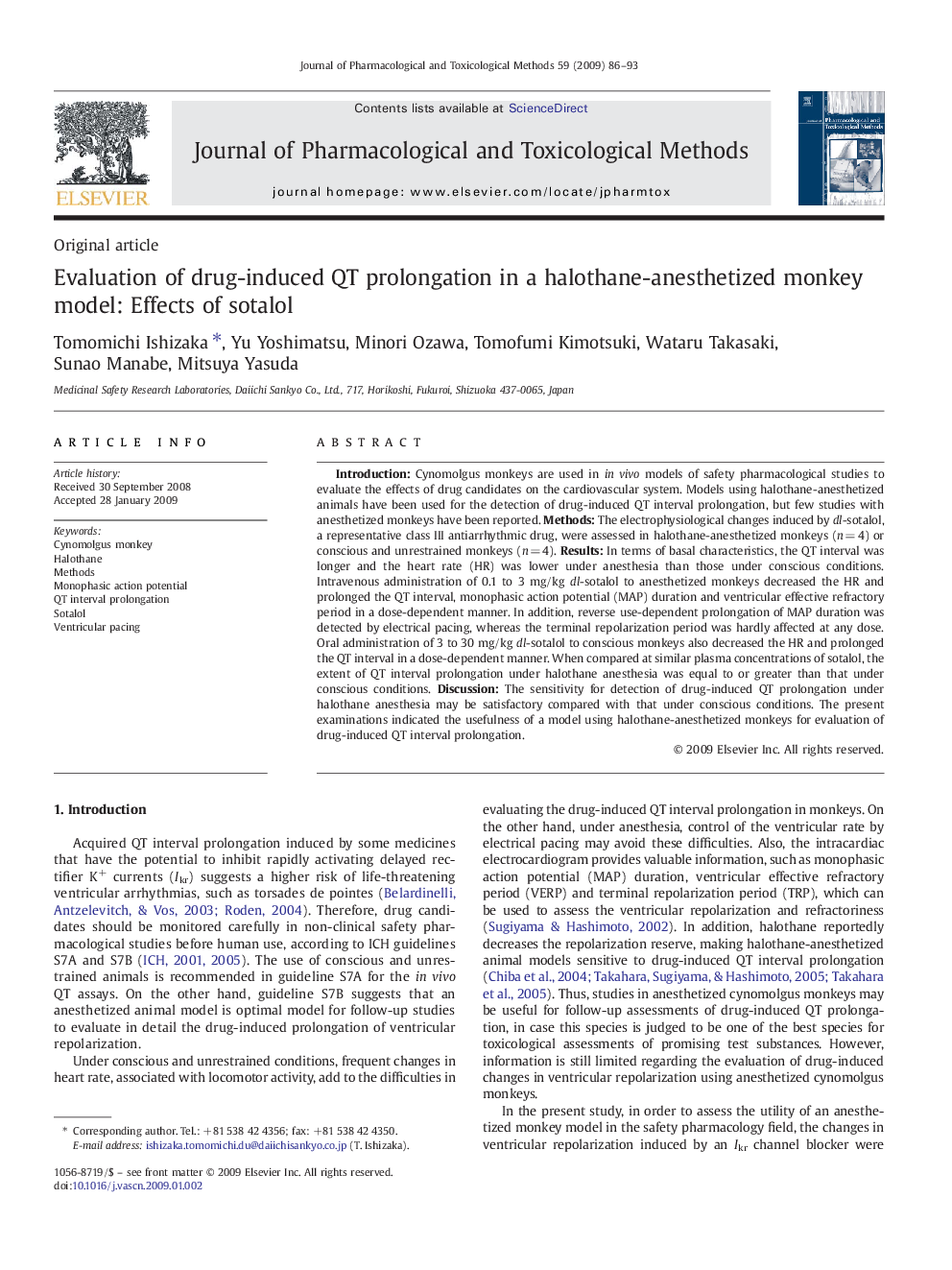| Article ID | Journal | Published Year | Pages | File Type |
|---|---|---|---|---|
| 2549541 | Journal of Pharmacological and Toxicological Methods | 2009 | 8 Pages |
IntroductionCynomolgus monkeys are used in in vivo models of safety pharmacological studies to evaluate the effects of drug candidates on the cardiovascular system. Models using halothane-anesthetized animals have been used for the detection of drug-induced QT interval prolongation, but few studies with anesthetized monkeys have been reported.MethodsThe electrophysiological changes induced by dl-sotalol, a representative class III antiarrhythmic drug, were assessed in halothane-anesthetized monkeys (n = 4) or conscious and unrestrained monkeys (n = 4).ResultsIn terms of basal characteristics, the QT interval was longer and the heart rate (HR) was lower under anesthesia than those under conscious conditions. Intravenous administration of 0.1 to 3 mg/kg dl-sotalol to anesthetized monkeys decreased the HR and prolonged the QT interval, monophasic action potential (MAP) duration and ventricular effective refractory period in a dose-dependent manner. In addition, reverse use-dependent prolongation of MAP duration was detected by electrical pacing, whereas the terminal repolarization period was hardly affected at any dose. Oral administration of 3 to 30 mg/kg dl-sotalol to conscious monkeys also decreased the HR and prolonged the QT interval in a dose-dependent manner. When compared at similar plasma concentrations of sotalol, the extent of QT interval prolongation under halothane anesthesia was equal to or greater than that under conscious conditions.DiscussionThe sensitivity for detection of drug-induced QT prolongation under halothane anesthesia may be satisfactory compared with that under conscious conditions. The present examinations indicated the usefulness of a model using halothane-anesthetized monkeys for evaluation of drug-induced QT interval prolongation.
